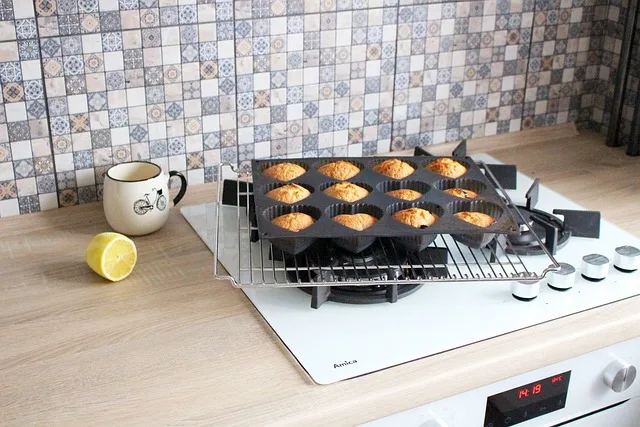First things first, prep work is key. Think of it as the foundation of a house; if it’s shaky, everything else will crumble. Start by removing all the cabinet doors and hardware. This not only makes painting easier but also gives you a chance to clean those hard-to-reach spots. A good degreaser will work wonders here—just like a magic eraser for your kitchen!
Once everything is clean and dry, it’s time to sand. Don’t skip this step! Sanding helps the paint adhere better, kind of like how a good primer sets the stage for a flawless finish. Use a fine-grit sandpaper to gently scuff the surface. You don’t need to strip the stain completely; just enough to create a rough texture.
Now, let’s talk paint. Opt for a high-quality, durable paint that’s designed for cabinets. You wouldn’t wear a raincoat in the sun, right? Similarly, using the right paint will ensure your cabinets withstand the daily hustle and bustle of kitchen life. A brush or a sprayer can work wonders here, but remember to apply thin, even coats. Patience is your best friend!
After the first coat dries, inspect for any imperfections. A little touch-up here and there can make a world of difference. Once you’re satisfied, seal the deal with a clear topcoat. This will protect your hard work and give your cabinets that stunning, polished look.
Transform Your Space: A Step-by-Step Guide to Painting Stained Kitchen Cabinets
First things first, gather your supplies. You’ll need a good quality primer, paint (preferably a semi-gloss or satin finish for durability), sandpaper, and some brushes or a sprayer. Think of this as your toolkit for a mini kitchen revolution!
Next, it’s time to prep. Remove all the cabinet doors and hardware. This is like decluttering your mind before a big exam—essential for a smooth process. Clean the surfaces thoroughly to get rid of grease and grime. Then, sand the cabinets lightly. This step is crucial; it’s like giving your cabinets a fresh start, allowing the paint to adhere better.
Now, apply a coat of primer. This is your secret weapon! It not only helps the paint stick but also blocks any stains from bleeding through. Once that’s dry, it’s showtime! Grab your paint and start applying it with smooth, even strokes. Imagine you’re painting a masterpiece—each stroke counts!
After the paint dries, reattach the hardware and hang the doors back up. Stand back and admire your handiwork! It’s amazing how a little paint can breathe new life into your kitchen. You’ve just transformed your space, and the best part? You did it yourself! So, what are you waiting for? Let’s get painting!
Revive Your Kitchen: Expert Tips for Painting Stained Cabinets Like a Pro
First things first, prep work is key. Think of it as laying the foundation for a beautiful house. Start by cleaning your cabinets thoroughly to remove grease and grime. A simple mixture of soap and water will do wonders. Once they’re clean, sand them down lightly. This step is crucial because it helps the paint stick better, kind of like how a good primer sets the stage for a masterpiece.
Now, let’s talk paint. Choosing the right type is like picking the perfect outfit for a big event. Go for a high-quality, durable paint that can withstand the hustle and bustle of kitchen life. A satin or semi-gloss finish is often the best choice, as it’s easy to clean and adds a lovely sheen. And don’t forget about color! Whether you’re feeling bold with a deep navy or keeping it classic with crisp white, the right hue can transform your kitchen from drab to fab.
When it comes to application, think of it as an art project. Use a good brush or roller to apply the paint evenly, and don’t rush it! Patience is your best friend here. Allow each coat to dry completely before adding another layer. It’s like building a cake; you want each layer to be perfect before stacking them up.
From Drab to Fab: The Ultimate DIY Guide to Painting Stained Kitchen Cabinets
First things first, prep work is key. Think of it as laying the foundation for a masterpiece. Start by removing all the cabinet doors and hardware. This is like giving your cabinets a spa day—clean them thoroughly to remove grease and grime. A little soap and water will do wonders, but don’t forget to sand them lightly. This step is crucial; it’s like giving your cabinets a fresh canvas to work with.
Now, let’s talk paint. Choosing the right color can feel like picking an outfit for a big event. You want something that reflects your style but also complements your kitchen. Whether you’re leaning towards a bold navy or a soft sage, make sure to use a high-quality paint designed for cabinets. Trust me, it’ll save you time and headaches down the road.
Once you’ve got your color, it’s time to get to work! Apply a primer first—think of it as the primer for your makeup routine. It helps the paint adhere better and gives you a smoother finish. After the primer dries, it’s showtime! Use a brush for corners and a roller for larger areas to achieve that professional look. Remember, patience is key; multiple thin coats are better than one thick one.
As you paint, imagine how your kitchen will feel with those stunning cabinets. It’s like giving your space a whole new personality! And don’t forget to let everything dry completely before reattaching the doors and hardware. The final reveal will be worth the wait, and you’ll be amazed at how a little paint can breathe new life into your kitchen.
Breathe New Life into Your Kitchen: How to Successfully Paint Stained Cabinets
First things first, let’s talk about prep work. Think of it as the foundation of a house; if it’s shaky, everything else will crumble. Start by cleaning your cabinets thoroughly to remove grease and grime. A simple mixture of soap and water will do wonders. Once they’re clean, lightly sand the surfaces to help the paint stick. It’s like giving your cabinets a little spa day!

Now, onto the fun part—choosing your paint! You want something durable, especially in a high-traffic area like the kitchen. Look for a high-quality acrylic or latex paint that’s designed for cabinets. Imagine transforming your space with a bold navy blue or a soft, creamy white. The right color can make your kitchen feel like a whole new world!
When it’s time to paint, use a brush for the corners and a roller for the flat surfaces. This combo will give you that smooth, professional finish. And don’t rush it! Patience is key here. Allow each coat to dry completely before applying the next. It’s like waiting for a cake to bake; you want it to rise perfectly!
Finally, once everything is dry, reattach the hardware or consider upgrading to something snazzy. New knobs or handles can be the cherry on top of your kitchen transformation. So, roll up your sleeves and get ready to fall in love with your kitchen all over again!
The Art of Cabinet Makeovers: Painting Stained Kitchen Cabinets Made Easy
First things first, let’s talk about prep work. Think of it as the foundation of a house; if it’s shaky, everything else will crumble. Start by cleaning those cabinets thoroughly. A mix of warm water and mild soap will do wonders. Once they’re squeaky clean, it’s time to sand them down. This step is crucial because it helps the paint stick like glue. Picture it as giving your cabinets a little spa day—smooth and ready for a makeover!
Now, onto the fun part: choosing your paint! You want something that not only looks fabulous but also stands up to the daily hustle and bustle of kitchen life. A high-quality acrylic or chalk paint can be your best friend here. Think of it as dressing your cabinets in a stylish outfit that’s also durable enough to handle spills and splatters.

When you’re ready to paint, use a brush for those nooks and crannies, and a roller for the flat surfaces. It’s like applying sunscreen—get an even coat to avoid those unsightly streaks! And don’t rush it; patience is key. Let each coat dry completely before adding another layer.
Before you know it, your stained kitchen cabinets will be transformed into a stunning focal point, breathing new life into your home. So, are you ready to roll up your sleeves and dive into this creative adventure? Your dream kitchen is just a paint job away!
Frequently Asked Questions
What Type of Paint is Best for Kitchen Cabinets?
For kitchen cabinets, a high-quality acrylic latex paint is recommended due to its durability, ease of cleaning, and resistance to moisture. Consider using a semi-gloss or satin finish for a smooth, wipeable surface that can withstand daily wear and tear.
How Long Does It Take to Paint Stained Cabinets?
The time required to paint stained cabinets typically ranges from a few days to a week. This includes preparation, priming, painting, and drying time. Factors such as the number of cabinets, the type of paint used, and the drying conditions can influence the overall duration.
What Supplies Do I Need to Paint Stained Kitchen Cabinets?
To paint stained kitchen cabinets, you will need the following supplies: high-quality primer, paint suitable for cabinetry, sandpaper (medium and fine grit), a paintbrush and roller, a clean cloth, painter’s tape, and a drop cloth to protect surfaces. Additionally, consider using a degreaser to clean the cabinets before starting. Ensure proper ventilation and safety gear, such as gloves and a mask, for a safe painting experience.
How Do I Prepare Stained Cabinets for Painting?
To prepare stained cabinets for painting, start by removing all hardware and cleaning the surfaces with a degreaser. Sand the cabinets lightly to create a rough surface for better paint adhesion, then wipe away dust with a damp cloth. Apply a primer suitable for stained wood to prevent bleed-through and ensure an even finish. Once the primer is dry, you can proceed with painting using your chosen paint.
Can I Paint Over Stained Cabinets Without Sanding?
Yes, you can paint over stained cabinets without sanding by using a bonding primer designed for glossy surfaces. This primer helps the paint adhere better, ensuring a smooth finish. Clean the cabinets thoroughly before applying the primer, and follow up with your chosen paint for optimal results.